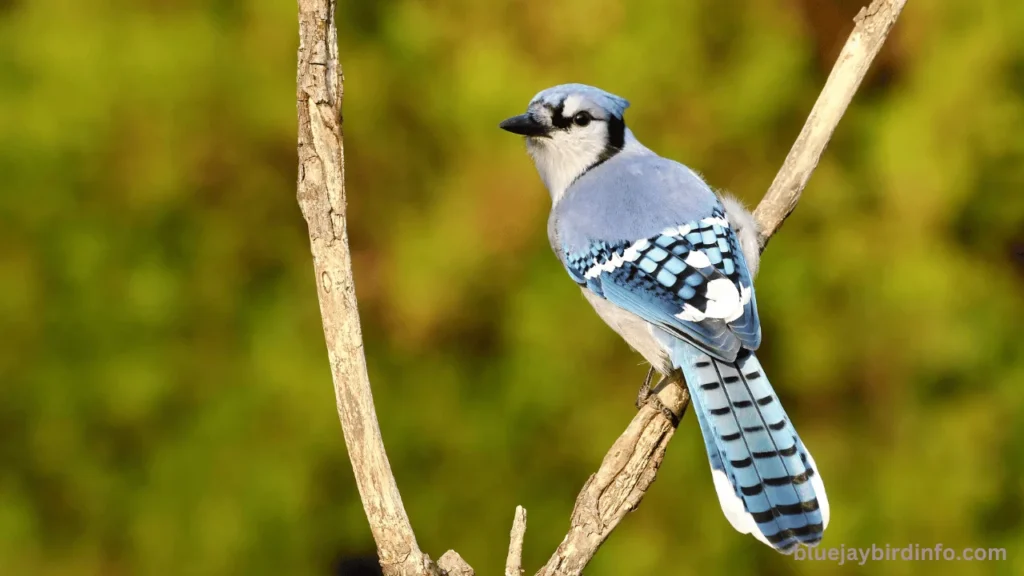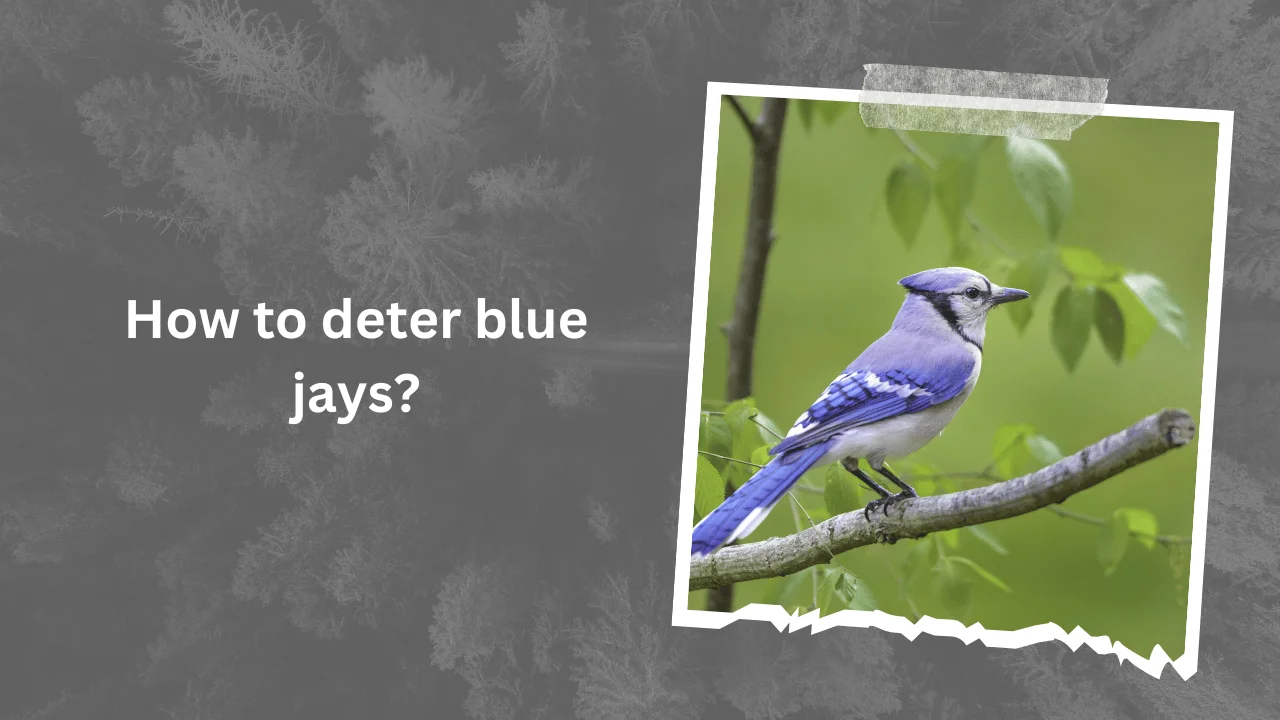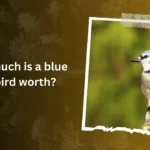Ever nurtured your garden with love and care, only to find your prize-winning sunflowers looking like they went ten rounds with a weedwhacker?
Or maybe your carefully planted veggie patch resembles a warzone, with seedlings mysteriously vanished? If you suspect the culprit is a feathered bandit with a taste for the finer things in foliage – the bold blue jay – you’re not alone.
These striking birds, with their vibrant plumage and raucous calls, are a common sight in backyards and parks.
But their beauty can be a double-edged sword for gardeners. While they play a vital role in seed dispersal in natural ecosystems, their foraging habits can wreak havoc on our carefully cultivated havens.
Fear not, fellow green thumbs! This blog post is your ultimate guide to deterring blue jays and reclaiming your garden paradise. We’ll delve into the fascinating world of these intelligent birds and explore a variety of humane and effective strategies to keep them from pilfering your precious plants.
From cunning camouflage tactics to high-tech gadgetry, we’ll equip you with the knowledge and tools to keep your garden thriving and those blue-feathered bandits at bay. So, grab your gardening gloves and your detective hat – it’s time to outsmart the Great Seed Heist!
Contents
- 1 Understanding Blue Jay Behavior
- 2 Physical Barriers
- 3 Visual Deterrents
- 4 Auditory Deterrents
- 5 Plant Selection and Garden Design
- 6 Conclusion
- 7 FAQ’s
- 7.0.1 Are blue jays harmful to my garden?
- 7.0.2 What are the most effective methods to deter blue jays?
- 7.0.3 Are there any natural deterrents for blue jays?
- 7.0.4 Will blue jays eventually get used to deterrents?
- 7.0.5 Can I coexist peacefully with blue jays?
- 7.0.6 Are there any ethical concerns about deterring blue jays?
Understanding Blue Jay Behavior
Blue jays are intelligent and resourceful birds with a fascinating array of natural behaviors. They are known for their foraging skills, often searching for insects, seeds, and fruits.
One of their most notable behaviors is caching, where they store excess food for later consumption. This caching behavior can sometimes lead to unintentional planting of seeds in gardens, as blue jays may forget where they’ve hidden their stash.
Attraction to gardens can be attributed to several factors. The availability of food sources, such as bird feeders, fruit trees, and ornamental plants, draws blue jays to gardens.
Additionally, gardens may provide suitable nesting materials like twigs and leaves. Water sources, like birdbaths or ponds, can also attract these birds.
Peak activity for blue jays often occurs during the breeding season, typically in the spring and summer. During this time, they are more likely to be seen foraging for food, building nests, and defending their territories. Understanding these seasonal patterns can help you time your deterrents effectively.

Physical Barriers
One of the most effective ways to deter blue jays from your garden is by creating physical barriers. Bird netting is a versatile option that can be used to protect individual plants, shrubs, or entire garden beds.
When using bird netting, ensure that it’s securely fastened to prevent birds from getting tangled or trapped.
For smaller plants or specific areas, cage-like enclosures made of mesh or wire can provide excellent protection. These enclosures can be customized to fit the size and shape of your plants, creating a safe haven from hungry birds.
Row covers are lightweight, breathable fabrics that can be used to protect young seedlings and vegetable plants from birds and other pests.
They can be easily draped over plants and secured with clips or stakes. However, it’s important to remove row covers during hot, sunny days to prevent overheating.
Visual Deterrents
Visual deterrents can be an effective way to scare off blue jays and protect your garden. Scarecrows and decoy birds can startle birds, but their effectiveness may diminish over time as birds become accustomed to them.
To maintain their effectiveness, it’s important to move scarecrows and decoys periodically.
Reflective objects, such as reflective tape, CDs, or Mylar balloons, can create a visual disturbance that scares birds away. Hang these objects around your garden or near vulnerable plants to deter blue jays.
However, these methods may require frequent replacement or adjustment to maintain their effectiveness.
Motion-activated sprinklers can be a more reliable deterrent. These devices detect movement and release a short burst of water, startling birds and discouraging them from returning. While they can be effective, it’s important to ensure that the sprinklers are positioned correctly to avoid watering your plants unintentionally.
Auditory Deterrents
Sonic deterrents are electronic devices that emit high-frequency sounds or distress calls to scare birds away. These devices can be effective in deterring blue jays, but it’s important to use them judiciously and follow the manufacturer’s instructions. Continuous use of loud noises can be stressful for both birds and humans.
Playing recordings of predatory bird calls can also help deter blue jays. However, the effectiveness of this method may vary depending on the specific bird species and the timing of the playback. It’s essential to use these recordings judiciously and avoid excessive noise pollution.
Human presence and noise can also deter blue jays. Regular activity in the garden, such as gardening, weeding, or simply walking around, can discourage birds from lingering. Additionally, using noise-making devices, such as bird scarers or clapping your hands, can startle birds and drive them away.
Plant Selection and Garden Design
Choosing the right plants can help deter blue jays and minimize damage to your garden. Opt for bird-resistant plants with tough leaves, strong stems, and less appealing fruits or seeds. Plants with spiny or hairy leaves, such as holly or Russian sage, can deter birds from landing and feeding.
To create a less inviting environment for blue jays, consider reducing food sources and nesting materials in your garden.
Remove fallen fruits and berries promptly, and avoid planting plants that attract birds excessively. Additionally, you can create a less cluttered garden by pruning overgrown shrubs and removing debris.
It’s important to remember that blue jays play a vital role in ecosystem health. While it’s necessary to protect your garden, it’s also crucial to maintain a balance between bird conservation and gardening.
By creating a diverse and sustainable garden that supports both wildlife and your own enjoyment, you can find a harmonious coexistence with these intelligent birds.

Conclusion
In conclusion, while blue jays are fascinating creatures, they can sometimes cause damage to gardens and crops.
By implementing a combination of physical barriers, visual deterrents, auditory deterrents, and strategic plant selection, you can effectively deter these birds and protect your garden.
Remember, it’s important to use humane and sustainable methods to deter blue jays. Avoid using harmful chemicals or traps that may harm the birds or other wildlife.
By understanding their behavior and adapting your gardening practices, you can coexist peacefully with these intelligent birds and enjoy a thriving garden.
Experiment with different strategies to find what works best for your specific situation.
By combining multiple approaches, you can create a more effective deterrent. Remember, patience and persistence are key when dealing with determined birds like blue jays.
FAQ’s
Are blue jays harmful to my garden?
While blue jays are beautiful birds, they can cause damage to gardens by eating seeds, fruits, and young plants. They can also disturb soil and damage plants while foraging.
What are the most effective methods to deter blue jays?
A combination of methods is often the most effective approach to deterring blue jays. Physical barriers like bird netting, visual deterrents like scarecrows or reflective objects, and auditory deterrents like noisemakers can be used. Additionally, choosing bird-resistant plants and creating a less attractive garden environment can help.
Are there any natural deterrents for blue jays?
Yes, there are several natural deterrents that can be used to discourage blue jays. Strong-smelling plants like peppermint or citrus can repel birds. You can also use natural repellents like cayenne pepper or garlic spray.
Will blue jays eventually get used to deterrents?
Blue jays can adapt to certain deterrents over time. It’s important to rotate or modify your deterrents to keep them effective. For example, you can move scarecrows or change the type of reflective object used.
Can I coexist peacefully with blue jays?
Yes, it’s possible to coexist peacefully with blue jays. By understanding their behavior and implementing appropriate deterrents, you can protect your garden while minimizing harm to the birds.
Are there any ethical concerns about deterring blue jays?
It’s important to use humane and sustainable methods to deter blue jays. Avoid using harmful chemicals or traps that can harm the birds or other wildlife.








